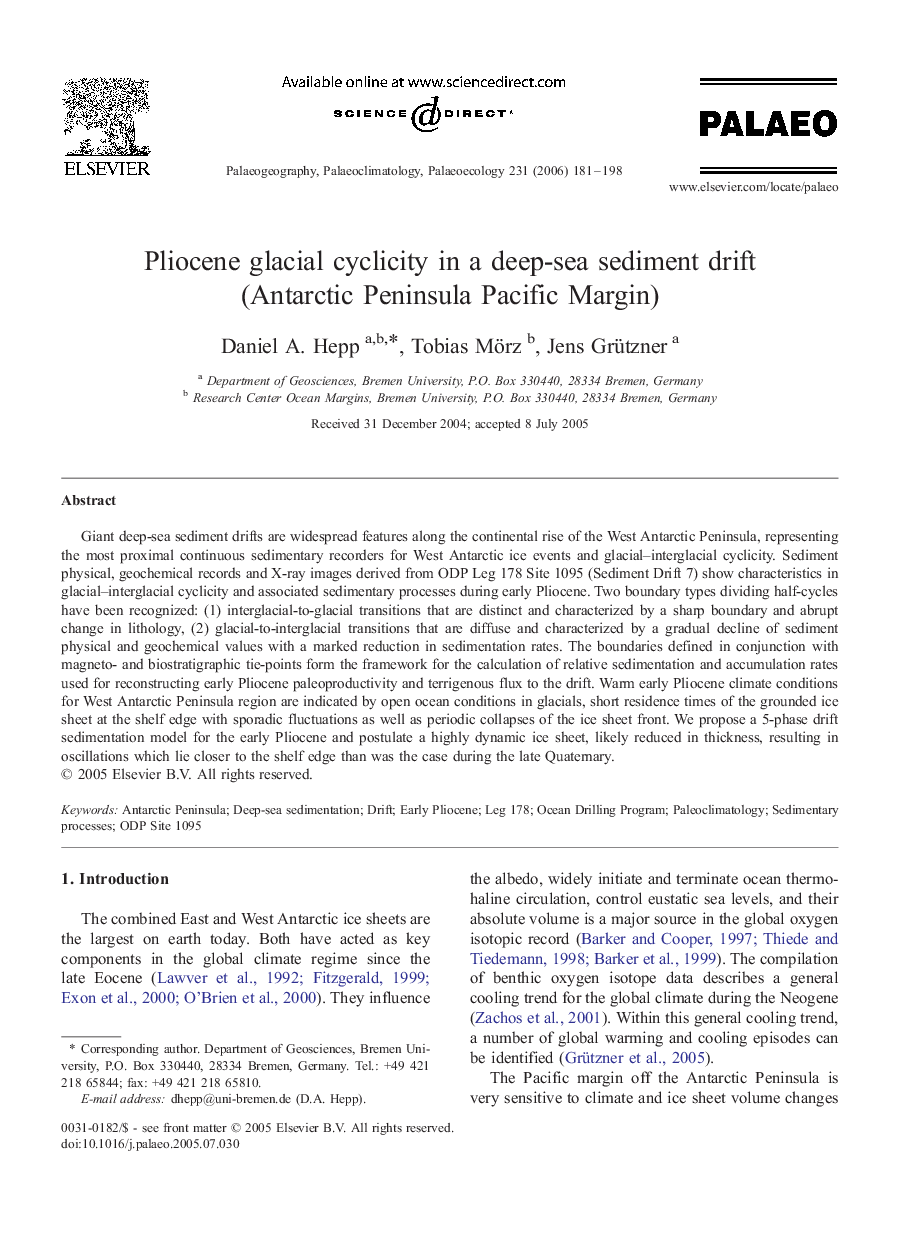| Article ID | Journal | Published Year | Pages | File Type |
|---|---|---|---|---|
| 4469588 | Palaeogeography, Palaeoclimatology, Palaeoecology | 2006 | 18 Pages |
Giant deep-sea sediment drifts are widespread features along the continental rise of the West Antarctic Peninsula, representing the most proximal continuous sedimentary recorders for West Antarctic ice events and glacial–interglacial cyclicity. Sediment physical, geochemical records and X-ray images derived from ODP Leg 178 Site 1095 (Sediment Drift 7) show characteristics in glacial–interglacial cyclicity and associated sedimentary processes during early Pliocene. Two boundary types dividing half-cycles have been recognized: (1) interglacial-to-glacial transitions that are distinct and characterized by a sharp boundary and abrupt change in lithology, (2) glacial-to-interglacial transitions that are diffuse and characterized by a gradual decline of sediment physical and geochemical values with a marked reduction in sedimentation rates. The boundaries defined in conjunction with magneto- and biostratigraphic tie-points form the framework for the calculation of relative sedimentation and accumulation rates used for reconstructing early Pliocene paleoproductivity and terrigenous flux to the drift. Warm early Pliocene climate conditions for West Antarctic Peninsula region are indicated by open ocean conditions in glacials, short residence times of the grounded ice sheet at the shelf edge with sporadic fluctuations as well as periodic collapses of the ice sheet front. We propose a 5-phase drift sedimentation model for the early Pliocene and postulate a highly dynamic ice sheet, likely reduced in thickness, resulting in oscillations which lie closer to the shelf edge than was the case during the late Quaternary.
